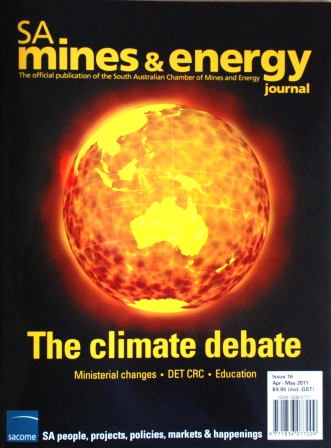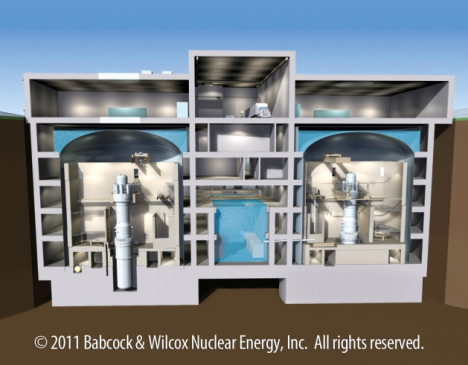 This a new article written by Ben Heard and me in the SA Mines & Energy Journal (issue 23, pg 22-23), about the potential for small modular nuclear reactors. (Ben should get the primary authoring credit here — my job was to ‘enhance’ this one rather than lead the writing.) For comments, head over the the BNC Discussion Forum, here.
This a new article written by Ben Heard and me in the SA Mines & Energy Journal (issue 23, pg 22-23), about the potential for small modular nuclear reactors. (Ben should get the primary authoring credit here — my job was to ‘enhance’ this one rather than lead the writing.) For comments, head over the the BNC Discussion Forum, here.
Also, be sure to check out Ben’s reporting on the Walkerville ‘environmentalists for nuclear energy’ event that was held last Saturday. It was a great success!
—————————
Back in August of last year, ‘born again’ nuclear advocate and long-time environmentalist George Monbiot made a surprisingly harsh call about energy solutions for climate change: “Small is useless”. Since the time of E.F. Schumacher in the early 1970s, we’ve heard the opposite. So what’s the deal?
Home solar PV systems are small. South Australia has easily the highest per capita installation of solar PV with around 15,000 systems, but this only adds up to 19.8 MW of (peak) capacity. It would take around 215 times this level of installation, or over 3.2 million systems just to match the yearly energy generated by the 760 MW of the Northern and Playford coal power stations.
Considering Adelaide has only 500,000 households, you can begin to see Monbiot’s point.

Conceptual drawing of a two module reactor, featuring full underground reactor containment, reservoirs for emergency passive cooling (top left and right) and fully contained below ground spent fuel cooling pond (bottom centre).
We need big solutions, solutions that can scale up. So what could possibly be good about the emergent technology of “small modular reactors” (SMRs) as a zero-carbon power offering?
When people think about nuclear power, they typically envisage something large. Huge, in fact. That’s reasonable, given that today’s global nuclear fleet is made up of plants larger than 600 MW, with the new French EPR coming in at a hefty 1,650 MW. For context, the entire baseload generation capacity for South Australia is around 3,000 MW.
But now, something very different is emerging in nuclear: the small modular reactor (SMR). These units range up from as little as 25 MW to around 180 MW. Their commercialisation will dramatically increase the flexibility and relevance of nuclear power in a range of settings, and South Australia is a good example.
As a mature, industrialised economy with a small population, South Australia’s overall growth in energy consumption is slow. It is difficult to envisage circumstances, any time soon, where there will be a strong case for an additional 1,000 MW of baseload to be added, all at once. So, for meeting new energy needs, nuclear power is on the outer.
Of course, we have a looming need to replace a great deal of baseload generation, starting with the 760 MW of the Northern and Playford coal power stations. That’s more like the size for nuclear. But unfortunately it has been so long since Australia invested in significant quantities of baseload that we are staring down a big “sticker shock”: the upfront price tag is going to be tough to swallow. That will be the case regardless of the technology, but nuclear is on the pricier end before heading into super-expensive solar options (more on the cost of nuclear for our final article). This leaves us stuck with the high greenhouse options of incrementally adding more low-efficiency gas for peaking (with high fuel costs), and smaller modules of higher-efficiency gas for new baseload.
But if nuclear power could be down-scaled… that changes things. What if, instead of purchasing 700-1000 MW all at once, you could buy 200 MW (or less) at a time, and work up from there? That is the promise of the small modular reactor: a compact, energy dense and zero carbon generating option for new power needs and fossil replacement in slow growing economies. Suddenly, the major capital raising challenge replacing 1,000 MW of baseload could be spread over a series of discrete investments, with returns beginning to flow much more quickly.
Filed under: Emissions, Nuclear | Leave a Comment »






.png)





